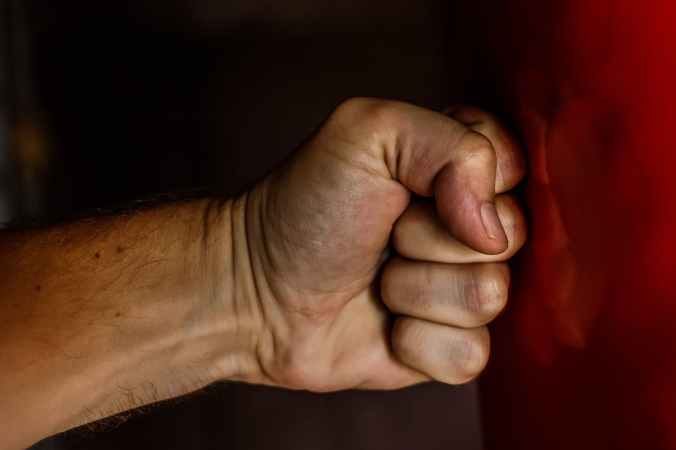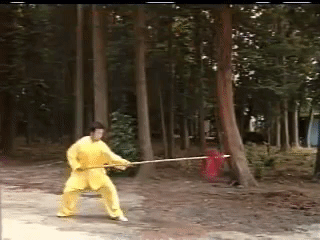
Photo by Pixabay on Pexels.com
I got into a discussion about Bengquan, one of the 5 fists of Xingyiquan, a Chinese martial art I’ve written about before, recently, which prompted me to consider what really made a Bengquan different to a regular straight punch that you’d find in any number of other martial arts. I thought I’d just jot down a few of my ideas about it, because that forces me to organise my thoughts, but it has turned into quite a long post. So, apologies for that, but I’m going to post it anyway 😉
Xingyi is the oldest of the 3 big internal martial arts of China. Because it is so old and has gone through the hands of so many different practitioners and been secreted into several different secretive families, who often don’t teach outsiders, there are various different ways of doing Xingyi/Xinyi these days. They all employ different exercises and can look pretty different to each other, so it’s hard to talk generally about XingYi without somebody disagreeing with you. Still, all the different branches of the art remain one family, and you can talk about the art in general to some extent while still making sense. Which is what I’m going to attempt to do.
One thing to note is that historically Xingyi was developed as a barehand adaptation of military spear fighting methods. Ji Jike, (died 1662) also known as Ji Long Feng “God of spear”, was the oldest historically record practitioner. He was a soldier for the Ming Dynasty who found himself on the losing side and had to hand over his weapons and adapt to civilian life. He kept practicing his spear skill but adapted it for barehand work.
These days Xingyiquan is famous for having 5 fists. Each of these is a different kind of strike. Bengquan, “Crushing fist”, is one of the most famous of these fists. It’s representative of the Wood element, and consists of a very direct, forward strike, usually kept low, to the solar plexus or abdomen.
Xingyiquan has been featured in a few movies recently, and it’s its Bengquan that always gets the glory so you can consider it a kind of representative technique for the whole art.
In this scene from The Grandmaster a Xingyi master runs through the 5 fists, ending with Bengquan, then proceeds to fight Wing Chun master Yip Man, who is quite impressed with the Bengquan fist.
In the clip he then goes on to fight a second master who is doing a Shaolin art (my guess would be that it’s meant to represent Hung Gar) – it’s interesting to contrast the two styles (something I will be doing below).
What I would consider a good example of Bengquan outside of movies is this XingYi performer Yang Hai, originally from China, but now living and teaching in Canada:
I think most people I know who do XingYi, regardless of their particular style, would regard this performance “good”.
So, the question I want to answer here is what makes what he’s doing a Bengquan as opposed to a regular straight punch? In short, if you were just to punch forward in a straight line, with your body weight behind it, would it be a Bengquan?
Unsurprisingly, my answer is “no”, so let me explain.
Starting at the top of the body and working down, the first thing to look at is the arm movements. One arm is retracting in Bengquan as the other punches – that action utilises the whole body in a very relaxed way because it makes the spine rotate. Nothing is stiff. The arms are working together in harmony, the spine is rotating and the hips are also moving around it.
One hand coming back to the hip as the other strikes is also a feature of the Reverse Punch in Karate. So how is this different? Notice that in Bengquan the two fists cross over the top of each other, rather than being unconnected, and on different sides of the body. (Does the similarity point to a common ancestor? Possibly, back in the mists of time… it’s hard to say).
On a deeper level, the whole action of Bengquan is formed by the opening and closing of the body to move the arms. The section where the hands end up just in front of the body (meeting in the middle) is the ‘close’ part, the section where one hand punches out and the other retracts to the hip is the ‘open’ part. (A half-step Bengquan is where you punch on the close section as well).
The concept of opening and closing goes a bit outside the scope of this article, and involves the dantien usage and back bow, amongst other things, but I’ve talked about it before. You find this opening and closing action in Taijiquan, Baugazhang and other Chinese martial arts.
The question of why the arm retreats all the way to the hip in bengquan is also a good one. It doesn’t initially seem like something that particularly practical to do in a barehand combat situation. (Note different styles of Xingyi retract the arm to different degrees, too). However, I believe it’s there for a couple of reasons. Firstly, considering the spear origins of the art, the hip it’s a natural place to hold the butt of the spear, and where it naturally ends up when you retract after a spear thrust. Secondly, bringing the hand all the way back (an exaggerated movement) helps with the feeling of opening and closing. If you can do it big, then you can (over time) learn to do it small.
Note that if you are doing a Bengquan with a spear in your hands then your other hand cannot retract to the hip while thrusting with the spear (since you are holding the spear with two hands), but apart from this the action is identical to the barehand method. But after the thrust, you’d retract the spear back, so the hand was back at the hip again. So, doing Bengquan with a spear (correctly called Beng Qiang) is repeating the action on one side of the body over and over (until you swap sides), while doing it barehand, you are alternating sides of the body with each punch. Like this:

The next thing I’d look at is the footwork. in Bengquan you step as you punch. You don’t land your feet, then punch, or punch without stepping. The step is an integral part of the movement. It’s part of the opening and closing of the body and part of the technique. In Xingyi your feet should always be moving.

Notice that his back foot stays connected to the floor for a comparatively long time for a stepping-in punch. He’s keeping that ground connection for a long, long time. His body and head are generally kept quite upright – he’s not lunging forward. All this is down to the type of footwork that XingYi uses, where the feet are kept under the body on a comparatively small base, as opposed to a wider stand where you have a longer base.
I believe that part of the purpose of this footwork is to aid a key feature that makes a Bengquan different to a regular straight punch – that is its ability to penetrate deeply into the target.
If you track the path of the fist in this example, it is on a slightly upward but mainly forward trajectory, like an arrow being shot from a bow. It goes right through the target in a straight line. It should be doing damage to anything it contacts on its trajectory, just like an arrow would, not aimed to land at a particular spot.
This feature marks Bengquan out as being different to a lot of punching methods that aim to land in one particular place in time and space. If you look at the path of a typical punch that is ‘swung’ at a target it is mainly swinging in an arc. So you’re timing it to land on the target as you drop your weight forward onto your front leg. That produces power, sure, but I wouldn’t call that a Bengquan as it’s not going through the target like you see in the Bengquan example above. Even if the force then goes through the pad or target, the punch itself doesn’t. To me a typical punch is about “landing on the target with your weight”, like a sledgehammer hitting something. Yes, that hurts and it’s effective, but it’s not what you should be doing in Bengquan. Done correctly it should displace a pad holder significantly. This is much easier to train on a person than a pad holder to be fair, as the contact of the fist on a pad is not the same as the contact of a fist on a body – the body is softer and crumples more as you impact, making it easier to get the right feel.
A key to look for in Xingyiquan, when its applied under pressure, is that the footwork doesn’t devolve into other methods, like say, falling into a long riding horse stance to help make up ground.
Xingyi is a collection of particular body methods (Shenfa)- once you start to lose one of them, the whole thing unravels, and you have… something else.
Pingback: Happy New Year! Here are my most popular Tai Chi Notebook posts from 2018 | The Tai Chi Notebook
Pingback: What makes Xingyi’s Bengquan different to a normal straight punch? Part 2: The bow draw. | The Tai Chi Notebook
My Xingyiquan teacher put a large amount of emphasis on Bengquan. He described the movement of the body to be like a coiling spring. At full extension, the body is like a spring wanting to return to its compressed state. Once fully compressed, the body naturally wants to expand outwards. The expansion feeds the contraction feeds the expansion, on and on in a continuous cycle. Often I will use a Bengquan in place of a more traditional jab style punch in most of the sparring I do, even while doing Taekwondo or Kickboxing style sparring. I find it to be a bit slower than the jab, but it is a staggering and damaging strike that most people aren’t prepared for.
LikeLike
From a Wing Chun perspective retracting a fist strike back to the hip and launching the strike again will deliver a more powerful strike, however the strike takes more time than launching the strike from the center of your solar plexus, and the strike is “broadcasted” in such a way that the opponent is more likely to see the strike coming resulting in an effective block against the strike: “A predictable attack yields a predictable result.” So, like everything in life it seems to be a double edged sword. It seems that the most effective time to use such a strike would be after the opponent is either tired and/or distracted.
LikeLike